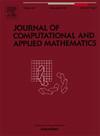论商业保险保费的偏颇
IF 2.6
2区 数学
Q1 MATHEMATICS, APPLIED
Journal of Computational and Applied Mathematics
Pub Date : 2025-08-14
DOI:10.1016/j.cam.2025.117019
引用次数: 0
摘要
保险费被定义为两个要素的乘积:先验费率,它取决于投保人在签订合同时可观察到的风险特征;后验费率,它包含了先验信息无法解释的剩余成分。本文探讨了后验率的数学结构及其相应的统计性质。与贝叶斯保费和可信度保费的情况一样,后验费率通常取决于先验费率和索赔历史。然而,在某些情况下,例如汽车保险的奖惩保费,后验率仅取决于索赔历史。我们把这种保险费称为商业保险费,其中后验率仅是索赔历史的一个函数。尽管简化的商业保险保费结构加强了与投保人的沟通,但它可能会引入一种被称为重复计算问题的系统性偏见。保险文献已经从经验上确定了奖惩制度中的这种偏见。我们的研究将现有的奖罚制度的实证分析扩展到更广泛的商业保险费,并提供了一个严格的数学框架,证明任何商业保险费都容易受到重复计算问题的影响。然后,我们提出了一个简单的解决方案来缓解这一问题,同时保持商业保险保费结构的简单性。数值分析,包括实际数据分析,证明了商业保险保费中重复计算问题的严重程度以及所提出的方法在缓解这一问题方面的有效性。本文章由计算机程序翻译,如有差异,请以英文原文为准。
On the bias of commercial insurance premiums
An insurance premium is defined as the product of two elements: the a priori rate, which depends on the policyholder’s observable risk characteristics at the time of contract, and the a posteriori rate, which encompasses the residual component not explained by the a priori information. This paper explores the mathematical structure of the a posteriori rate and its corresponding statistical properties. As in the cases of the Bayes premium and the credibility premium, the a posteriori rate depends on both the a priori rate and the claim history in general. However, in certain cases, such as the bonus-malus premium in auto insurance, the a posteriori rate depends solely on the claim history. We refer to such insurance premiums, where the a posteriori rate is solely a function of the claim history, as commercial insurance premiums. Although the simplified structure of commercial insurance premiums enhances communication with policyholders, it can introduce a systematic bias known as the double counting problem. The insurance literature has empirically identified this bias in bonus-malus systems. Our study extends the existing empirical analysis of bonus-malus systems to a wider range of commercial insurance premiums and provides a rigorous mathematical framework demonstrating that any commercial insurance premium is susceptible to the double counting problem. Then, we propose a simple solution to mitigate this issue while retaining the structural simplicity of the commercial insurance premium. Numerical analysis, including real data analysis, demonstrates the extent of the double counting problem in commercial insurance premiums and the effectiveness of the proposed method in mitigating this issue.
求助全文
通过发布文献求助,成功后即可免费获取论文全文。
去求助
来源期刊
CiteScore
5.40
自引率
4.20%
发文量
437
审稿时长
3.0 months
期刊介绍:
The Journal of Computational and Applied Mathematics publishes original papers of high scientific value in all areas of computational and applied mathematics. The main interest of the Journal is in papers that describe and analyze new computational techniques for solving scientific or engineering problems. Also the improved analysis, including the effectiveness and applicability, of existing methods and algorithms is of importance. The computational efficiency (e.g. the convergence, stability, accuracy, ...) should be proved and illustrated by nontrivial numerical examples. Papers describing only variants of existing methods, without adding significant new computational properties are not of interest.
The audience consists of: applied mathematicians, numerical analysts, computational scientists and engineers.

 求助内容:
求助内容: 应助结果提醒方式:
应助结果提醒方式:


